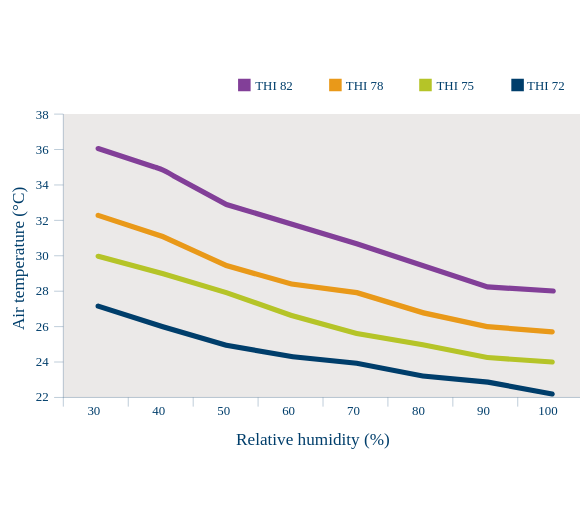
When does heat stress occur?
Research shows that cows suffer from heat stress faster than is commonly believed. Heat stress is caused by a combination of temperature and relative humidity: the Temperature Humidity Index (THI).
As illustrated in the figure, cows may start experiencing heat stress when the THI surpasses 72, leading to adverse effects on fertility. As the THI climbs above 78, milk production is substantially affected, resulting in decreased yields. When the THI rises beyond 82, the situation becomes critical. Cows will begin to exhibit signs of severe stress, such as increased respiration and decreased feed intake. In this case there is a risk of significant losses in milk production, and in extreme cases, cows may succumb to the stress.
The average relative humidity in the UK is 60% in the summer months. At this relative humidity, heat stress occurs as early as 22°C.

